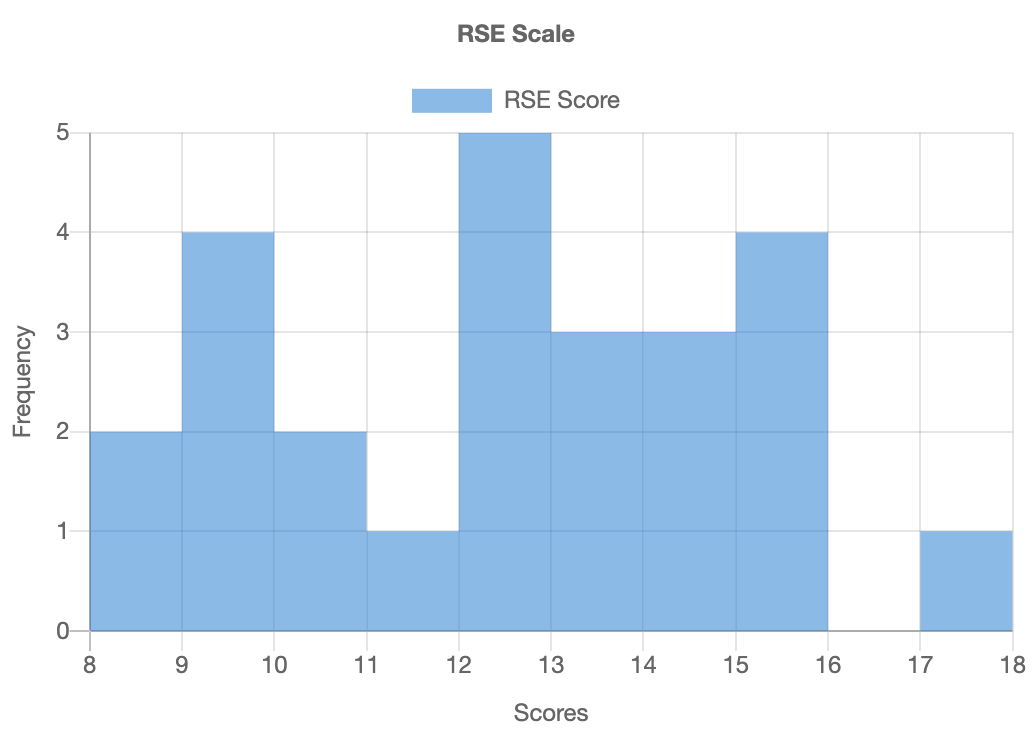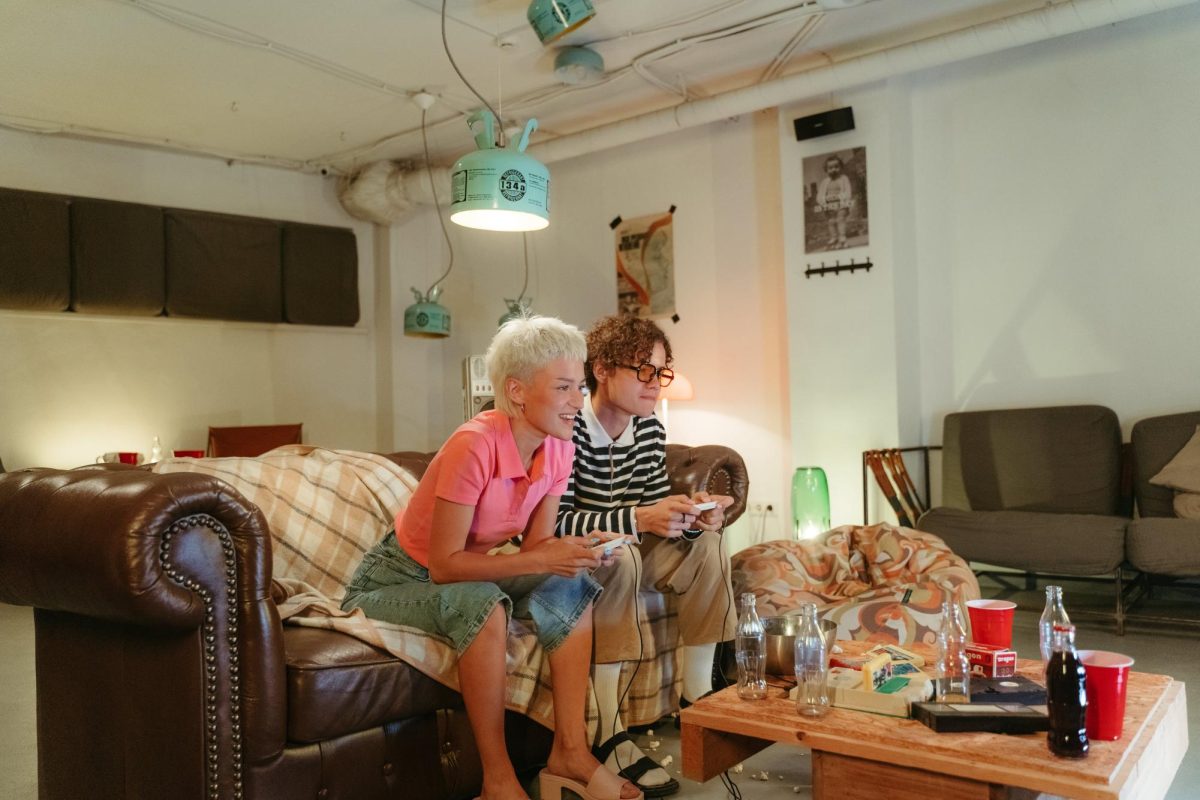
LGBT individuals are disproportionately affected by mental health struggles compared to that of heterosexual individuals. This is reflected in media which reinforces stereotypical societal attitudes toward specific social groups. However, in recent years, LGBT representation in media has shifted away from this negative portrayal and moved toward more positive portrayals of these characters. This study aims to investigate how LGBT representation in movies and television impacts mental health, using self-perception as a mediator. A study of 30 LGBT+ college students from the ages of 18 to 25 was conducted to examine their media habits, self-esteem, mental health outcomes, and the relationship between these variables. Results suggest that media representation helps to affirm LGBT identities but has a limited effect on overall self-perception. Additionally, higher self-esteem was correlated with higher levels of anxiety and depression. This challenges existing literature and highlights the complexity of representation, showing the need for additional studies.
In recent years, representation of the LGBT community in television and movies has become more prevalent, shifting away from outdated, stereotypical portrayals of LGBT individuals as comic relief or side characters, toward more positive and accurate portrayals. This change was a necessary one, as media plays a powerful role in shaping societal attitudes, which affects the self-perception of LGBT audiences. In this context, self-perception refers to the way individuals view and feel about themselves, using their own traits to create positive or negative judgments about their identities. By seeing authentic LGBT representation in mainstream media, LGBT individuals can become empowered to feel validated in their identities and gain a sense of inclusion and real-life relatability. This fosters self-perception, which can positively influence mental health. However, despite the rise in LGBT representation, the psychological effects it has on LGBT individuals’ mental health is not fully understood.
I chose this topic as it is deeply personal to me. As a gay male, my sexual orientation strongly impacted how I viewed myself during my early teenage years. During this challenging developmental period, I turned to media for comfort. One show that stood out to me was Degrassi: The Next Generation, which featured Marco, a high school student who comes out as gay. Seeing him live his authentic self and be celebrated for it was empowering, making me feel more confident in my identity and enabling me to believe that I could also live as my authentic self. While there is research suggesting that LGBT representation can foster greater societal acceptance as well as improve LGBT self-perception, less research exists on how representation directly impacts mental health. Additionally, as early LGBT representation frequently featured negative stereotypes, understanding the impact that positive LGBT representation can have on self-perception and mental health is crucial as it can shape self-perceptions.
Existing studies tend to focus on societal attitudes toward the LGBT community generally, or from the perspective of heterosexual audiences, rather than considering the effects it has on LGBT viewers themselves. As television shows and movies of late have had increasingly more authentic portrayals of members of the LGBT community, it is vital to address this gap in knowledge to understand how representation impacts mental health.
The objective of this study is to analyze how LGBT representation in media affects the mental health of LGBT audiences, with self-perception as a mediator. This paper will investigate the relationship to find out whether accurate portrayals positively influence mental health outcomes, including anxiety and depression. This will be accomplished through examining relevant research and conducting a survey of LGBT college students. Analyzing these results will allow for a greater understanding of representation influences self-perception, and, in turn, mental health outcomes, offering broader implications for the effects of LGBT representation.

RQ: How does LGBT representation in television and movies impact the mental health of LGBT individuals?
Overview
A survey was conducted to address the effect that LGBT representation in media has on the mental health and self-perception of LGBT individuals. Here, LGBT is an inclusive term for individuals who identify as lesbian, gay, bisexual, and transgender. This design was chosen because an online survey allows for the collection of responses from a decently sized group of LGBT individuals from a college campus. Through self-reporting media consumption habits, self-perception, and mental health outcomes, analyses can be made to achieve a stronger understanding of how representation influences these individuals.
Sample
The sample consisted of around 30 LGBT college students aged 18-25, recruited via on-campus LGBT services. This included being distributed via the LGBTQ+ Center’s newsletter, the LGBT+ Alliance Club, and the Stony Brook subreddit. The survey was made available on Qualtrics, and individuals participated anonymously. Recruitment methods included convenience sampling, where individuals that are LGBT+ and had access to the survey could participate. Snowball sampling was also utilized, as respondents could share the survey with others that fit the criteria. It is focused on college-aged individuals as they are constantly exposed to a multitude of media which they are susceptible to being influenced by.

The first page of the survey informed individuals what the study is on, and notes that questions included sensitive topics related to mental health. After consenting, participants answered a series of questions to collect demographic information. Following this, they were asked questions on their media consumption habits, specifically television and movies, and the kind of representation that they typically engage with. Participants were further asked to self-report their self-perception using the Rosenberg Self-Esteem (RSE) scale. Finally, the participants mental health attitudes were measured using items from the Generalized Anxiety Disorder-7 (GAD-7) and Patient Health Questionnaire-2 (PHQ-2) scales.
Measure
The independent variable, LGBT representation in media, was measured by asking participants about the frequency of which they encounter LGBT characters in movies and television, and their views on if they were authentic or not. Questions and statements were measured using a 5-point Likert scale, ranging from 1 = strongly disagree to 5 = strongly agree. Other answer choices were worded differently, such a 1 = monthly or less and 5 = multiple times a day. The dependent variable, mental health outcomes (anxiety and depression) was measured using items from GAD-7 and PHQ-2. These were measured on a 4-point Likert scale, ranging from 0 = not at all to 3 = nearly every day. Self-perception, the mediator, was measured by using 6 items from the RSE scale. It similarly uses a 4-point Likert scale, with answer choices ranging from 1 = strongly agree to 4 = strongly disagree; the values of the final question are reversed to accurately represent the scale.
The research question asked how LGBT representation in media impacts the mental health of LGBT individuals, with self-perception acting as a mediator. It was hypothesized that exposure to LGBT representation would result in higher self-esteem in LGBT individuals, which would in turn lead to positive mental health outcomes, particularly lower levels of anxiety and depression. Overall, the results did not support the hypothesis.
Although participants reported positively to questions asking about their sexual orientation in relation to media and self-perception, it appeared that exposure to media representation does not have a great impact on self-perception. For example, one question asked if positive portrayals of LGBT characters make them feel more comfortable in their own identities; 13 participants strongly agreed, 10 agreed, four disagreed, and one strongly disagreed. The responses to this question were correlated with the self-reported answers taken from the Rosenberg Self-Esteem scale, yielding a weak positive correlation of r = 0.1088. Additionally, participants were asked how often they watch television shows and movies with LGBT characters. Correlations between these questions and the RSE score were calculated; television shows had a correlation of r = 0.0138, while movies yielded r = -0.0400. These weak correlations suggest that although positive representation may increase self-perception in relation to one’s sexuality, it does not have a significant impact on one’s overall self-esteem.
Self-perception, measured by RSE, had a moderate positive association with mental health outcomes. The results from the GAD-7 and PHQ-2 scales were correlated with that of the RSE scales, yielding r = 0.4169 and 0.3501 respectively. These correlations were very unexpected, as they indicate that greater levels of self-esteem are associated with higher levels of anxiety and depression. This directly counters the hypothesis and other literature which suggest that higher levels of self-esteem would be associated with lower levels of anxiety and depression.
The direct relationship between mental health and LGBT representation was also mixed. The mental health scales were correlated with whether positive or negative portrayals of LGBT characters make individuals feel more confident or less confident in their identities. The correlation between confidence from positive portrayals and the GAD-7 yielded r = 0.3419, while for PHQ-2, r = 0.3842. This countered the hypothesis, suggesting that higher levels of depression and anxiety are correlated with higher confidence from positive representations.
Interestingly, when asked if negative portrayals make individuals feel less confident in their identities, the correlations were not largely different. Negative portrayals of LGBT characters had a stronger correlation with anxiety as r = 0.4237, and a weaker correlation with depression as r = 0.1456.
This study set out to investigate how LGBT representation in media impacts the mental health of LGBT individuals, with self-perception acting as a mediator. It was hypothesized that positive LGBT representation would result in higher levels of self-esteem among LGBT individuals, which would in turn improve mental health outcomes by reducing anxiety and depression. A survey was conducted to address the research question, composing of college-aged LGBT individuals that attend Stony Brook University, and they were asked questions to measure the relationship between their media consumption habits, self-perception, and mental health. However, the results from this sample were unexpected, revealing contradictory and questionable relationships that counter existing literature. They provide important implications by challenging the existing literature and emphasizing the need for in-depth research to be done on this topic to further grasp the complex relationship that media has with individuals.
First, this study found that media representation has limited influence on self-perception. Exposure to positive portrayals of LGBT characters were weakly correlated with self-esteem, as r = 0.1088. Exposure to LGBT characters in television shows and movies also illustrated almost no correlation, as r = 0.0138 and -0.0400 respectively. This is consistent with existing literature, as Dajches & Barbati (2024) found that media representation can help individuals feel validated in their sexual identities, but that there was no evidence that this could significantly positively affect mental health outcomes. This supports my research, as many participants responded positively to questions considering representation and self-perception. With this, it is likely that individuals feel validated in their sexual identity but is not enough to significantly impact their self-esteem.
Second, this study found that self-perception was positively correlated with mental health challenges. This is inconsistent with the existing research and the hypothesis. Self-esteem, as measured by RSE, featured a moderately positive association with both depression, as measured by PHQ-2, and anxiety, as measured by GAD-7. They indicted correlations of r = 0.4169 and r = 0.3501 respectively. Existing research goes against this, as minority stressors that affect the LGBT community prevent individuals from complete identity affirmation in improving their self-esteem, thereby predicting negative mental health outcomes (Mongelli et al., 2019, p. 27). The reason might be that those who reported lower self-esteem feel affirmed in their LGBT identity but have other outside factors that prevent them from feeling completely comfortable in their skin.
Third, this study found that media representation has a questionable association with mental health outcomes. The findings suggest that exposure to positive portrayals were associated with higher levels of anxiety and depression. However, they also suggest that negative portrayals were associated with higher levels of anxiety and depression. This is consistent and inconsistent with the existing research. Gomillion & Giuliano (2011, p. 339) explain how negative portrayals can worsen feelings of isolation and value. Furthermore, although literature does not tackle the direct impact that exposure to representation has on someone, it addresses how media normalizes sexuality and mediates negative experiences, leading to more positive mental health outcomes (Craig et al. 2015, p. 270-271). The reason might be that there are other factors that affect identity development that can lead to mental health struggles, unrelated to or larger than their sexuality.
This study makes several important implications which contribute to our understanding of the complex relationship between LGBT media representation and the effect on LGBT audiences. The positive association between self-esteem and mental health struggles highlights the need for more specific models, such as the minority stress theory, which investigates specific stressors related to minority groups. Sexual orientation plays a big role in one’s self-perception, but there are many other outside factors that influence this outside of media. Additionally, the findings suggest that the effect television and movies have on individuals is not as strong as expected, which further highlights the need to investigate factors other than representation that affect minority stress. However, the study and literature reviewed also highlights the need for more positive, authentic portrayals of LGBT characters in media. Representation will not outright solve all mental health issues in individuals, but it can help foster feelings of acceptance and validation. Harmful and stereotypical representations have been known to exacerbate negative attitudes toward self-perception.
It is important to note some limitations of this study. One, it featured a small sample size. The goal was to reach 50 participants, although only 30 were achieved. An additional 14 individuals participated in the study, but did not answer every question, so their responses were removed so all respondents would have complete data. The participants were also all college-aged students from Stony Brook University, limiting the generalizability of the results. The small sample size could have also impacted the questionable correlation results. Future research should utilize a larger and more diverse sample. It might also be beneficial to change the age range of the study to teenagers, as they are more susceptible to be influenced by media and are likely more insecure about their sexual orientation. Two, it is possible that the results of my study were affected by a self-report bias. Participants answered sensitive questions about their self-esteem and mental health; they could have answered questions inaccurately due to appear more socially desirable. Future research may benefit from addressing this limitation. Three, the self-perception criteria has room for improvement. This study used the Rosenberg Self-Esteem Scale, which is a general scale that does not specifically address self-perception as it relates to LGBT identity; many other factors that could have influenced their self-esteem. Future portrayals may adopt a different approach by creating scales specifically designed to see how sexual orientation plays a role in one’s self-perception. Four, the study uses “LGBT,” but due to the scope of the research, is mostly unable to go in-depth on each of these identities. They are all consistently categorized under the umbrella term and treated as one, although different sexual orientations have experiences with representation and self-perception.
This study investigated how LGBT representation in movies and television impacts the mental health of LGBT individuals, with self-perception as a mediator. Despite working to affirm sexual identity, the findings indicated that media representation has little influence on overall self-esteem. Surprisingly, higher levels of self-esteem were correlated with higher levels of anxiety and depression. Additionally, positive LGBT portrayals were associated with greater identity confidence but greater mental health struggles. These findings illustrate the need for further research to be done using targeted measures and larger samples to achieve a better understanding of how effective representation is on mental health and self-perception.







